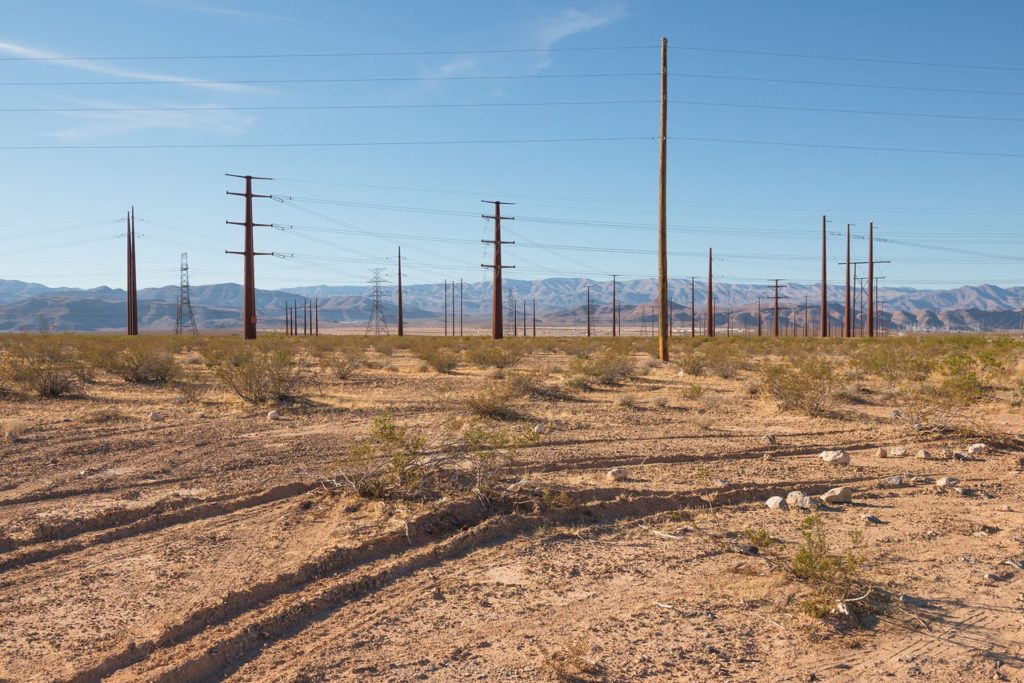Story from Marcia Brown, Foundations of Success, and Joy Page, Defenders of Wildlife
A coalition of conservation organizations, supported by the Doris Duke Charitable Foundation (DDCF), is working to facilitate responsible renewable energy development by minimizing its impacts on wildlife and wildlands. The partnership, including Defenders of Wildlife, the Natural Resources Defense Council, The Wilderness Society, and The Nature Conservancy, seeks to positively influence the siting and operation of utility-scale solar, wind and geothermal energy projects, as well as the transmission lines needed to distribute generated power. The “DDCF partners” are working with Foundations of Success (FOS) to use the Open Standards to develop a strategic plan to guide their work into the future.
Renewable energy is growing rapidly in the United States. In March of this year, the United States set a new renewable energy milestone. According to the U.S. Energy Information Administration (EIA), and for the first time, wind and solar energy represented 10% of all electricity generated in the country, with wind accounting for 8% and solar reaching 2%. EIA predicts that renewable energy will account for about one-third of all new electricity generation added to the U.S. grid over the next three years.
Replacing dirty fossil fuels with renewable energy sources is essential to address climate change, one of the primary threats to wildlife and wildlands. To facilitate the transition to clean energy, 29 states have established renewable portfolio standards (RPS) that require utilities to sell a target percentage of renewable energy. For example, California and New York both have an RPS that requires 50% renewable energy by 2030. Meeting these ambitious targets will require not only distributed energy, such as rooftop solar panels, but also utility-scale wind, solar and geothermal energy projects.
Utility-scale renewable energy projects require considerable amounts of land – by one estimate, producing 1 MW of solar energy in California requires approximately 7 acres of land and this 1 MW only powers an average of 220 homes.[1] Considerable effort is needed to guide the development of utility-scale renewable energy facilities to ensure that they limit impacts to ecologically important areas. This is also crucial for helping scale up responsible development rapidly – by reducing conflicts and controversy, projects can be permitted more quickly and economically.
The DDCF partners are working to ensure that renewable energy projects are built “smart from the start.” This means that, to minimize the impact on wildlife and wildlands, the projects should:
- be located close to sources of energy demand, such as cities and factories, and use existing transmission infrastructure, to the extent possible;
- avoid important and sensitive wildlife habitat and wildlands, and where possible, be built on land that is already degraded due to previous use as industrial sites, landfills, gravel mines, sewage treatment plans, airports, and marginal municipal lands;
- incorporate best management operational practices to minimize impacts to avian and bat species; and
- compensate for any unavoidable loss of wildlife habitat by, e.g., protecting or restoring similar ecosystems.
One of the most important accomplishments of the DDCF partners to date has been helping the Bureau of Land Management (BLM) establish a systematic approach to directing renewable energy development to appropriate sites on federal public lands. After years of providing technical input, in November 2016 the BLM issued a “leasing rule” to facilitate the approval of clean energy projects in prescreened areas or “zones.” The use of such zones has been shown to significantly reduce environmental conflicts, while also streamlining the permitting process and providing greater certainty to developers that projects proposed in those areas will be approved. The DDCF partners continue to engage in crucial work to ensure the leasing rule is implemented successfully, working with project developers and the agency to help projects succeed in existing zones and identify appropriate new zones in areas with high potential and demand, such as southern Nevada. Building off their success on public lands, the DDCF partners are also now looking to translate their experience to advance responsible renewable energy development on private lands.
Working with federal and state agencies, the renewable energy industry, and corporate energy purchasers, the DDCF partners are developing and implementing a robust and diverse strategic plan to ensure that Americans do not have to choose between reducing greenhouse gas pollution and protecting our rich legacy.
For more information, contact Catalina Tresky.
[1] http://www.drecp.org/documents/docs/alternatives_eval/Appendices/Appendix_L_Estimating_Future_Generation_Capacity.pdf

The Dry Lake Solar Energy Zone on public land outside of Las Vegas demonstrates the value of a smart approach to renewable energy siting and development. Solar projects in the low-conflict zone will have fewer impacts because the land has already been disturbed by other uses. The smart approach allowed the federal Bureau of Land Management to permit the projects in under 10 months, which is less than half the average time. First Solar’s Switch Station 1 and 2 projects in the zone will go online in 2017, providing enough power to serve about 46,000 homes per year.
